SHA 2015 Seattle, Washington (January 6-11, 2015): Call for Papers!
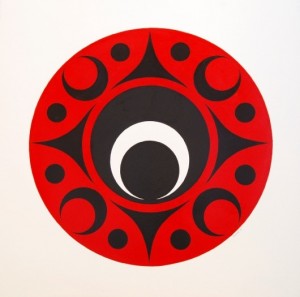 The Call for papers is now open!
The Call for papers is now open!
The deadline for online abstract submission is July 10, 2014. Mailed submissions must be postmarked on or before July 10, 2014. No abstracts will be accepted after July 10, 2014!
The Organizing Committee for the SHA 2015 Conference on Historical and Underwater Archaeology invites all of you back to the Pacific Northwest for the second time in the SHA’s history. The 2015 Conference will take place at the Sheraton Hotel in the heart of the city of Seattle, with many restaurants, famous coffee shops, and microbreweries within a short stroll. The conference venue is five blocks from the Pike Place Market and the rejuvenated piers of the Seattle waterfront with ships, waterfront dining, the Seattle Aquarium, and a new enclosed Ferris wheel. As one of America’s gateways to the Pacific Ocean, this is an amazing setting to thinking about our conference theme, “Peripheries and Boundaries.”
As SHA comes to the Pacific Northwest for the second time in the organization’s history we wanted to select a theme that reflects the unique circumstances of the region and addresses some of the issues that frame historical archaeology scholarship in the West. In some ways the theme echoes the historical circumstances of Seattle, a community that was geographically bounded and economically marginal, but whose history transcends those boundaries in the process of becoming one of the 21st century’s economic and cultural centers of the world. We expect that the theme will foster many papers and symposia that explore the many manifestations of boundaries and peripheries in the past – and in the present.
The SHA 2015 Conference Committee hopes to encourage flexibility in the types of sessions offered. Sessions can take the form of formal symposia, panel discussions, or three-minute forums, and each session organizer may organize the time within each session as he/she wishes. Sessions may contain any combination of papers, discussants, and/or group discussion. More than one “discussion” segment is permitted within a symposium, and a formal discussant is encouraged, but not required. All papers will be 15 minutes long. We strongly encourage participants to submit posters, as the latter will be given significant visibility in the conference venue.
The SHA will not provide laptop computers for presenters. If you are chairing a session in which PowerPoint presentations will be used, you must make arrangements for someone in your session to provide the necessary laptop computer.
The call for papers is posted: https://sha.org/index.php/view/page/annual_meetings
Please review the PDF on the SHA page which has detailed information about the conference, papers, and submission guidelines.
The SHA.org page, as well as Facebook, Twitter, and the Blog will be updated regularly with conference information with links to hotel reservations, travel tips, travel award application, volunteer forms, and other pertinent information. Be sure to follow the 2015 conference on Facebook and Twitter using the hashtag #SHA2015.
Any questions about Seattle 2015 can be sent to the Program Chair, Ross Jamieson, at the general program email address: <sha2015program@gmail.com>.
We hope to see you all in Seattle!
Archaeology Education at a Crossroads
This post began as a lesson in acronyms to explain SHA’s commitment and involvement with the AEC and NCSS. I’ll get to those in a minute, but the post has expanded due to recent events at the Society for American Archaeology (SAA) annual meeting to include discussion points on the future of public archaeology. We seem to be at an impasse for what we can achieve as separate societies and the need to work together or form another group was echoed in every public archaeology session I attended at SAA.
For me it comes down to the age old typology debate: are we lumpers, or are we splitters? The best answer: it depends. And it depends on the question you’re asking.
Is there enough public archaeology offered within existing professional organizations? The current model for public archaeology at SHA includes the active Public Education and Interpretation Committee (PEIC- of which I am chair), professional development workshops offered as the schedule will allow before the conference, organized panels and symposiums on the topic, a public day on the Saturday during the annual meeting, and general sessions where public archaeology papers are grouped together by the conference organizers. There’s also my favorite hybrid, integrated sessions where the lines between terrestrial, underwater, and public archaeology are blurred and tackle all subjects under a common theme. The SAA as well as other profesional societies including regional conferences have similar committees and offerings.
It seems like enough, yet the SAA electronic symposium “Getting Back to Saving the Past for the Future: Heritage Education at a Professional Crossroads” brought to light that compared to other professions, after 20 years archaeology hasn’t had nearly the impact or traction that other subjects are able to garner on a national level. Hence the crossroads.
The solution proposed at the close of the session by organizer Meg Heath was to form another organization. The Archaeology Institute of America (AIA) stepped up and offered a full day where archaeology educators could hold a conference during their annual meeting in New Orleans (January 2015). The idea came up naturally as their aia-outreach-and-education google group, which launched end of 2013, garnered hundreds of responses. Problematic for SHA members is that our conferences are scheduled nearly each and every year for the same dates in separate locations. Ben Thomas (AIA) suggested they host the southeast portion of the conference in New Orleans and SHA could concurrently host a northwest conference within our conference in Seattle. But not being in the same room, not having the same networking opportunities, and leaving it up to technology to bridge the gap between the two factions are serious obstacles to overcome. If I’ve learned one thing about conferences over the years: physical presence matters.
What are the other options? Here are four marinating in my mind.
Archaeology Education Clearinghouse (AEC)
SHA, SAA, and AIA already have a partnership in place, although its loosely defined and far too few people know it exists. The three organizations created the Archaeology Education Clearinghouse (AEC) as a convenience to sponsor a booth at the National Council of Social Studies (NCSS). NCSS is the penultimate meeting for social studies teachers, district level coordinators, administrators, and researchers in instruction and design. Over 25,000 teachers and administrators belong to NCSS and thousands attend approximately 400 sessions offered each year at their annual conference.
For the past seven years SHA has participated in the National Council of Social Studies (NCSS) annual conference through representation by the Archaeology Education Clearinghouse (AEC). We have the exhibitor booth and present a session on making the past come alive in classrooms using ready-made materials. This year the AEC expanded its traditional role and worked together over the year to develop handouts for educators specific to the grades and subjects they teach. While the main activity of our conference calls was organizing NCSS participation, we also discussed cross promotion of National Archaeology Day events and Boy Scout Jamboree.
The name Archaeology Education Clearinghouse is problematic. For one, most archaeologists are not aware the AEC exists. For two, the word clearinghouse implies we are a portal or an almanac for all archaeology education materials. But the name works for educators. They recognize what a clearinghouse is and it’s a very appropriate way to market to them at the conference—one stop shopping for them to gather resources and get to their next stop. For future joint public archaeology enterprises I hope the intent and framework of the AEC holds and increases in prominence. The three organizations should be working together to maximize efficiency for all of us doing this kind of work.
Project Archaeology
Another lumping option is to consider existing programs, such as Project Archaeology. This national program of the Bureau of Land Management (BLM) is housed at Montana State University and for 20 years they have researched, developed, and tested archaeology education materials for formal classroom settings that many of us have adapted for informal use. Their current flagship curriculum is Investigating Shelter, endorsed by the National Council of Social Studies. Project Archaeology is one of the only organizations with professional development opportunities for those interested in archaeology education. They have a national network of coordinators in place in 32 states. In addition to sessions on education trends and assessment, the bi-annual meeting always includes a reading circle on a current public archaeology work, and when possible the author(s) attend. Attendance is small but the framework and expertise is there.
Education Conferences
If we continue with lumping the societies together and we recognize that what we’re currently doing isn’t working, why not try a new model? What if those dedicated to archaeology education who generally meet before an archaeological conference met before an education conference: National Council of Social Studies (NCSS), National Science Teachers Association (NSTA), or North American Association for Environmental Educators (NAAEE)? Putting on a standalone conference is difficult work, but piggy backing on an existing one independent of when the big three meet seems a viable option. Rather than trying to bring educators to us, we go to them.
A New Society for Public Archaeology
This is the ultimate splitting option. We at SHA, more so than SAA or AIA, understand the reasons for needing to create a new society to further our own discipline. Coming up on the 50th anniversary of the founding of SHA, some of the very reasons for the formation of the society are being echoed within public archaeology circles. However, adding another meeting adds a financial constraint not many public archaeologists can manage. For myself, I rely on conferences to keep me current on archaeological issues and trends that is essential to my outreach work It would be difficult to have to pick one over another.
SHA: A Home for Public Archaeology
Whatever solutions are offered or new society put in place, I implore SHA members doing public archaeology to continue attending the annual meeting and keep infusing the creative work you are doing into the places provided by the society. Get involved with the PEIC, we are always open to new members and new ideas. Request professional development workshops you need to take your archaeology education programs to the next level. Share with colleagues successes and challenges, that’s the only way we’ll make progress on our long term goals. When you hit a an obstacle you can’t overcome yourself, organize a panel discussion to tackle the obstacle and foster growth within the society. Take advantage of the Public Day as an expo for the specialized work we do. And if you live near a host city for future NCSS (New Orleans 2015, Washington DC 2016, San Francisco 2017, Chicago 2018) come experience firsthand how important it is that we show up. It’s frightening- if it were not for us and our presence through the AEC, there would be no archaeology represented for our nation’s social studies educators.
So…are you a lumper or a splitter? Let us know what your thoughts are about the future of Public Archaeology in our discipline!
Meet a Member: Barbara Heath
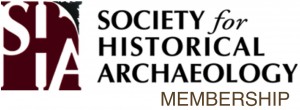 Over the coming months, we’ll be bringing you entertaining interviews with a diverse array of your fellow SHA members. Meet a member for the first time or learn something about a colleague that you never knew before. This blog series also offers current members an opportunity to share their thoughts on why SHA membership is important (Camaraderie? Professional service? Exchange of ideas in conference rooms and beyond? You tell us!). If you would like to be an interviewee, please email the Membership Committee Social Media Liaisons Eleanor Breen (ebreen@mountvernon.org) or Kim Pyszka (kpyszka@aum.edu).
Over the coming months, we’ll be bringing you entertaining interviews with a diverse array of your fellow SHA members. Meet a member for the first time or learn something about a colleague that you never knew before. This blog series also offers current members an opportunity to share their thoughts on why SHA membership is important (Camaraderie? Professional service? Exchange of ideas in conference rooms and beyond? You tell us!). If you would like to be an interviewee, please email the Membership Committee Social Media Liaisons Eleanor Breen (ebreen@mountvernon.org) or Kim Pyszka (kpyszka@aum.edu).
An Interview with Dr. Barbara Heath, Associate Professor of Anthropology at the University of Tennessee, Knoxville and the Chair of the SHA Membership Committee
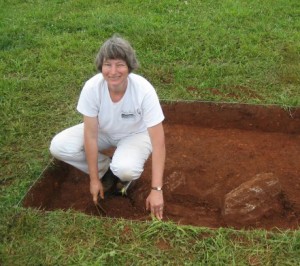 What is the first site you worked on? What is the last one (or current one)?
What is the first site you worked on? What is the last one (or current one)?
I worked with artifacts from a number of sites when I was a freshman and sophomore at William and Mary as a volunteer for the Virginia Research Center for Archaeology–I remember working with the collections from Corotoman and some of the Kingsmill sites. My first fieldwork was at Shirley Plantation in Charles City County in the summer of 1980. The last site I worked on with my students and friends was Coan Hall, a 17th-century site on the Northern Neck of Virginia in December (2013), and where I hope to continue working over the next few years. I’m also wrapping up work soon at Indian Camp, an 18th-century plantation, and 19th-century tavern, store and farm in the eastern Virginia piedmont. http://web.utk.edu/~bheath2/
Fieldwork or labwork?
I love them both, but fieldwork just a bit more. I like the physicality of fieldwork as well as the mental challenges, I love to be outside, and fieldwork has brought me to some really beautiful places.
What are you currently reading?
Ian Hodder’s Entangled, The Book Thief, and the Statutes at Large of Great Britain (each volume a real page turner) to try to understand customs laws in the 18th century.
What did you want to be when you grew up?
An archaeologist–I told my second grade teacher that’s what I would do and put it as a future career in my high school yearbook.
Why are you a member of SHA?
I’m a historical archaeologist–SHA is where my professional allegiance lies. SHA is important in so many ways–providing a venue for archaeologists to get together and share ideas, publishing Historical Archaeology, keeping us up-to-date with news, research and resources on the website and in the newsletter, and, for US archaeologists, serving an advocacy role for archaeology and historic preservation legislation. I belong to other professional organizations as well, but SHA has the biggest impact while being focused on the research areas that interest me most.
At what point in your career did you first join SHA?
I joined SHA during my first year of graduate school at Penn and attended my first conference in 1983 in Williamsburg.
How many years have you been a member (approximately)?
31 years–YIKES!
Which benefit of belonging to SHA do you find the most beneficial?
I look forward to the conference every year (even when it’s cold and miserable) to meet up with old friends, meet new people, and hear about the interesting work that’s going on around the world. I’ve seen many places that I wouldn’t otherwise have had the chance to visit by attending the conference and have benefitted personally and professionally from getting to know many of the great people who belong to SHA.
Connecting with the connectionless, or: How I stopped worrying and came to terms with the Snowbirds
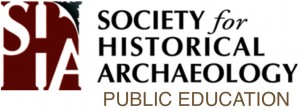 I happen to be a public archaeologist in a place many might envy (especially after this winter): southwest Florida. I have worked at the Florida Public Archaeology Network for several years and have done public archaeology and public history in a number of states across the U.S. East Coast. I was excited to take this job and apply what I’ve learned to a part of the world wholly new to me.
I happen to be a public archaeologist in a place many might envy (especially after this winter): southwest Florida. I have worked at the Florida Public Archaeology Network for several years and have done public archaeology and public history in a number of states across the U.S. East Coast. I was excited to take this job and apply what I’ve learned to a part of the world wholly new to me.
One of the biggest parts of public interpretation is knowing your audience and I quickly learned that that was going to be more difficult than anticipated. Southwest Florida’s population history is inconsistent at best. Without any real roads or rail lines, the area remained as wild as any of the west until the 1920s and 1930s. Today there are very few “native” communities. In one of the counties in my region, the local historical advisory council reported that fifty percent of the population moves out of the county every eight years (Charlotte County Historical Advisory Council 2012). The rest of the area residents are migrant families and snowbirds. “Snowbirds” (for those not in the know) are retirees who come south for The Season (the period between Thanksgiving and Easter) before returning to the Northeast U.S., Midwest U.S., or eastern Canada.
The question became: how do you connect people to a landscape and an archaeological past with which they had no personal connection? A connection to one’s own community, backyard, and family history is the first and easiest way to bring together archaeology and the wider public (like these wonderful public archaeology projects: The Maritime Archaeology Trust, Ontario’s Fugitive Slave Chapel, and the WWII Maritime Heritage Trail, Battle of Saipan).
When the local population is not at all local (or permanent) and when archaeological interest stops at resources from “back home,” some public archaeology techniques just will not work. I needed a new game plan that avoided an assumption of prior common connection or knowledge. I also needed to redefine what meaningful and successful public archaeology meant in this case. If you ever find yourself in a similar situation, here are some things I’ve learned:
Sometimes Flashy is OK
As a discipline we’ve moved far past the days of the Big Men worship. There are so many more fascinating personal and wider cultural connections found in a modern archaeologist’s research. We know so much more now that it’s almost a pity to get stuck on the George Washingtons. But to an unconnected seasonal visitor these singular individuals can act as a gateway to a much more complex discussion of archaeology.
For example, last year Florida began a state-wide initiative called Viva Florida 500 which commemorates the 500th anniversary of Ponce de León’s arrival to Florida shores.
Including the Southwest Florida leg of León’s 1513 expedition helped me broach the topics of proto-historic and historic native populations (primarily the Calusa) and their cultural adaptations in the face of the Spanish, the Calusas’ ties to Cuba, Spanish ships and shipwrecks in Florida waters, and the archaeological evidence of Florida’s role as a northern borderland to their New World colonies through lectures and children’s programming. I not only placed an emphasis on broader archaeological principles and the preservation thereof, but directed them to actual physical sites and museums where they could learn more. We even offered kayak paddles to Mound Key Archaeological State Park which was the Calusa capital at the time of contact and the site visited by León. Participants could connect the Big Man to the very people and environment he visited 500 years ago in a very tangible way.
Additionally, unusual and personal topics find niche audiences. I’ve spoken about the Florida archaeology of pets, beauty and hygiene, tourism, gambling, and toys. By far, my most popular and oft requested talk for the snowbirds is the archaeology of bootlegging and rumrunning in Southwest Florida. You might be surprised what goes over well.
Sometimes Digital and Social Media Sources are Not Always Your Friends
It is almost hard to keep up with all of the innovative ways archaeologists are using social media and digital resources to share their work with the public (for example, IUP’s Archaeology Island and VCU’s Virtual Curation Laboratory, to name a few). Unfortunately, in an area with residents (and even historical organizations) that have absolutely no online presence, all the Facebook posts, Twitter announcements, Reddit threads, and digital collections will go unrecognized and unutilized. I have had to balance my accustomed social media presence with other traditional methods like good old fashion newsprint, TV, and radio, printed and posted flyers, and a great deal of pavement pounding. In my case, old standbys have been vital.
Find the Interpretive Gaps
There seems to be a great deal of focus on a very narrow range of historical and archaeological topics in southwest Florida: the Calusa, the Seminole, and snowbirds Thomas Edison and Henry Ford. Since those were heavily represented topics, I sought out new pastures.
Fort Myers is named after a Seminole War and Civil War fort that once stood on the site. Surprisingly, this era is of little focus in the town’s historic interpretation and preservation endeavors, leaving the door wide open for new efforts. I was genuinely surprised to learn how many people didn’t know Fort Myers was named after a fort, and an unusual fort at that. Interestingly, most of the Union troops stationed there during the Civil War were from the 2nd Regiment U.S. Colored Troops.
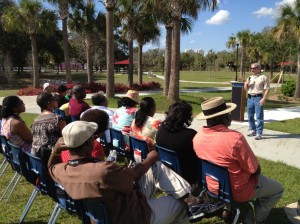
Attendees listen to local history professor, Dr. Irvin Winsboro, talk about the Battle of Fort Myers
Together with the Lee County Black History Society, FPAN initiated a community celebration commemorating the USCT in the historically African American neighborhood of Dunbar. Reenactors, community organizations, historians, archaeologists, and two American Legion posts participated in the inaugural event in which more than 150 visitors attended. 2015 marks the 150th anniversary of the Battle of Fort Myers and we plan to host an even bigger celebration to engage this underserved population.
Patience is Everything
This was (and is) the hardest lesson I’ve learned in such an attendance numbers-focused field. Constant pressure has been the key to success. My first year in Southwest Florida, well-advertised, community-requested events went completely unattended. No one. Not a seat filled.
Year two, my usual audience had two to 12 people. I have never been more elated to see two people in my whole pubarch life. At last, progress! My “success meter” has mentally shifted from attendance counts to number of programming invitations. I began to receive more speaking programming invitations to unusual locations like yacht clubs, Sugar Festivals, Swamp Heritage days, and DAR meetings. In these early stages, unsolicited invitations are markers of an accepted message and spread of legitimacy.
Year three has brought audiences of 12 to 150+ people. Seasonally rotating populations mean timing and scheduling are key. Adapting my pace to “Florida time” and re-imagining what successful public archaeology looks like in southwest Florida has given me a whole new outlook and direction for my future work. Hopefully they day will soon come when the snowbirds and other temporary and connectionless residents of southwest Florida will feel a little more connected to their home-away- from-home thanks in part to FPAN’s work.
So tell me, how do you engage connectionless populations? How have you been able to successfully connect with tourists?
Works Cited
Charlotte County Historical Advisory Committee
2012 Introductory notes. Historical Connections Conference, Port Charlotte, Florida.
Nazis, Ethics and Tolerance
 Last week a student rushed into my office exclaiming “My God Dr. Ewen, have you seen this video on the National Geographic Website!?!” A little while later I received an email from Terry Brock alerting me to activity on Twitter and Facebook relating to the video my student wanted me to see. It was the now infamous clip from the proposed reality show Nazi War Diggers.The two and a half minute video depicted three guys in camo gear rooting around in a hole and coming up with a human femur (which they at first thought was a humerus). This was followed up by the trio speculating about the horrible manner of the soldier’s death. The video was a distasteful display that demanded an immediate response. This is what happened next:
Last week a student rushed into my office exclaiming “My God Dr. Ewen, have you seen this video on the National Geographic Website!?!” A little while later I received an email from Terry Brock alerting me to activity on Twitter and Facebook relating to the video my student wanted me to see. It was the now infamous clip from the proposed reality show Nazi War Diggers.The two and a half minute video depicted three guys in camo gear rooting around in a hole and coming up with a human femur (which they at first thought was a humerus). This was followed up by the trio speculating about the horrible manner of the soldier’s death. The video was a distasteful display that demanded an immediate response. This is what happened next:
I thought, oh no, not again! I was transported back two years to when the National Geographic Channel debuted their metal detecting reality show, Diggers. The reaction to that show was just as vociferous, if not as swift. The National Geographic Channel listened to us then, perhaps they would now.
I emailed David Lyle, CEO of the National Geographic Channels and said that the preview of their new show, Nazi War Diggers, had offended many archaeologists, myself included. I also emailed Jeff Altschul, president of the SAA, who had been getting an earful from his constituency. He decided to make it a two prong attack and take their objections to the National Geographic Society. David Lyle responded to my email relatively quickly and said that the clip had been taken out of context and provided me with the full description of the show. He also said it would only be aired in Europe My response was that the SHA was an international organization and that it was being joined by other international organizations (SAA, AAA, AIA, EAA, and the EASA). Our list of concerned was growing larger and growing impatient. They got the message.
Jeff Altschul drafted a joint letter that all the major organizations signed, but by then the National Geographic Channel had already issued this statement:
“National Geographic Channels International, in consultation with colleagues at the National Geographic Society, announced today that it will pull the series Nazi War Diggers from its schedule indefinitely while questions raised in recent days regarding allegations about the program can be properly reviewed. While we support the goal of the series, which is to tell the stories of long lost and forgotten soldiers, those left behind and still unaccounted for, and illuminate history working in concert with local governments and authorities, we also take seriously the questions that have been asked. National Geographic Channels is committed to engaging viewers in the exploration of the world and all of us associated with National Geographic are committed to doing our work with the highest standards. We know the same holds true for our producing partners, including our partners on this series.”
So, mission accomplished. Or was it?
Is this only a temporary reprieve till the next outrageous show comes along? Will this be a rolling battle against edutainment with no end in sight? Perhaps not, but we are going to have to be willing to work with the networks.
When the offending video was posted the howls of righteous outrage began almost immediately. Archaeologists began gathering pitchforks and torches to storm the National Geographic castle. The internet and social media such as Twitter and Facebook created the flashmob and the Nazi War Diggers webpage had nearly 200 negative comments before it was taken down.
Interestingly, all that was known about the show was the few paragraphs and the clip on the website. Admittedly, the producers could not have picked a more inflammatory video to post and with their initial missteps with Diggers, the archaeological community was not inclined to cut them any slack. Still, Jeff and I have seen that the NGC had worked to make the show Diggers better and we were willing to hear them out and work with them on Nazi War Diggers. However, the program has been shelved and it doesn’t look like it will be aired without substantial reworking, if ever.
So what does this tell us? I think it tells us that the NGC is willing to work with the archaeological community if we are willing to work with them. I know many of you will scoff and insist that there is no working with this unethical machine. Yet our negotiations have produced results. Say that about Spike’s Savage Family Diggers or the Travel Channel’s Dig Fellas or Dig Wars. There is no redeeming archaeological value to any of those shows, but I hear no hue and cry to boycott those networks. Probably because we know that they don’t care.
Let’s keep working with the National Geographic Channel to help them make shows that, if not something we want to watch, is at least something that doesn’t offend our sensibilities. If this is a trend in programming, we need to take a proactive stance and work to make these shows less about finding past things and more finding things out about the past.
Preserving Black Heritage in London, Ontario: The Fugitive Slave Chapel (1847-1869)
by Matthew Beaudoin, Holly Martelle, Nicole Brandon (Timmins Martelle Heritage Consultants Inc.), and Darryl Dann (Independent Researcher)
The plain, wood framed, vernacular style, residential cottage sitting upon the lot at 275 Thames Street, London, Ontario, was slated for demolition to make way for an expansion of the Aboutown Travel Services parking facilities. After the request for demolition was approved, groups of concerned and aware citizens began protesting and combating the order because they remembered the history associated with the structure; they remembered the building as the Fugitive Slave Chapel.
History of the Slave Chapel
The area surrounding London has an important, if often forgotten, association with 19th century Black heritage in North America. As one of the terminus points on the Underground Railroad, the population of former slaves was increasing during the early nineteenth century. As such, there are numerous points of local history, like Uncle Tom’s Cabin, near Dresden, as well as communities, like the former settlements of Wilberforce, near Lucan, and Buxton, near Chatham. The first African Methodist Episcopal (AME) Church (referred to as the Fugitive Slave Chapel) in London, Ontario was one of these focal points.
The AME Church was built in the area known as the Fork of the Thames in 1847 to service a settlement of Black refugees who lived on the south side of the Thames River. The AME Church purchased the lot through a board of trustees from William Clark, a carpenter who obtained the original deed for the lot. The church was renamed the British Methodist Episcopal Church in 1856 to reinforce its commitment to the British Crown. In 1869, a new church building was erected at 430 Grey Street, which is the location of the current Beth Emanuel Church, and the property containing the original AME Church was sold to James Seale. The church building at 275 Thames Street remained on the lot and became a residential property. It was long assumed that the original structure was demolished; however, E.J. Carty, a reporter for The London Advertiser (1864-1936), was able to confirm that the structure at 275 Thames Street was the original structure.
During its tenure at 275 Thames Street, the AME Church was visited by several notable people, including John Brown, who spoke to a delegation here advocating revolution and what would transpire as the raid on Harper’s Ferry. In 1986, the London Historic Sites Committee recognized the AME Church as a site of historic and cultural importance in London, and erected a plaque on the building.
Public Excavations
The public outcry concerning the demolition of the building was enough to get a 60 day stay of demolition to properly document the cultural and archaeological heritage of the property. In this time, Timmins Martelle Heritage Consultants Inc. (TMHC) offered its services to conduct the archaeological assessments. While the City of London financed some portions of the archaeological assessment, much of the personnel, time, and resources was supplied by TMHC, volunteers from the Ontario Archaeological Society and the general public, who helped to make this project a success.
The excavations were conducted during weekends and included mapping the property, the excavation of test pits, the excavation of one-meter units, and the mapping and excavation of identified features. Given the time constraints placed on the project by the imminent demolition, the outpouring of public volunteers formed the backbone of this project and helped complete our archaeological assessment before the deadline.
A total of 41 units were excavated in the roughly 20 meters by 15 meters area behind the standing structures. The archaeological work uncovered a variety of domestic artifacts that included ceramics, glassware, iron objects, and modern refuse. The majority of the artifacts examined to date have been associated with the later 19th/early 20th century habitation of the site. A total of eight potential cultural features were identified and excavated; one of which may have been a grey water pit and the rest were likely small refuse pits.
Where are we now?
At the time of writing, the majority of fieldwork has been completed and volunteers have completed the processing of artifacts, with cataloging and analysis to follow. There are plans to conduct additional mechanical topsoil stripping behind the house to look for additional features. During the investigation process, the demolition plans for the building were put on hold to allow for the potential relocation of the structure to a new home.
The Fugitive Slave Chapel Preservation Project organizers are presently trying to raise funds (approximately $160,000) to relocate the Fugitive Slave Chapel structure to an empty lot adjacent to the Beth Emanuel Church on Grey Street. Once relocated, the Fugitive Slave Chapel will require at least $500,000 to renovate and repurpose it as a community center that will offer meals, counseling, and educational programs, as well as being a museum and focal point of Black history in London. Until now the Fugitive Slave Chapel Preservation Project has had moderate successes at raising the initial relocation funds from public donations through efforts such as their ‘2¢ Worth’ campaign; however, they will continue to require further donations to make their vision to preserve the Fugitive Slave Chapel a success. The revitalized role of Fugitive Slave Chapel continues to have tremendous potential to be a focal point of Black heritage in the area, as well as serving members of the London community in need.
This project helped emphasize the importance of archaeology to help communities remember, as well as the role we have in helping preserve, forgotten pasts; however, this was not a one-sided relationship. The public played a vital role in the implementation, excavation, and conservation of this project and it would not have been possible without their interest and support. While this project was not without its difficulties, as with any project, it shows that CRM archaeology and public engagement can work together to conduct archaeology that is significant to local communities.
Coming Soon to an Inbox Near You: 2014 Members Needs Assessment Survey
 Once called the “most ambitious” of the early efforts to profile the demographics of archaeologists in America (surveying over 800 practitioners of historical archaeology in 1991), the newest edition of the SHA Member Needs Assessment Survey will be sent out next week (Zeder 1997:3). The survey has a three-decades-long history of documenting the pulse of SHA members – our ages, our salaries, our careers, our thoughts on social issues, our dreams for the organization, and the nightmares that keep us up at night. The first survey was conducted in 1980 followed by one in 1991, 1998, 2005, and 2008.
Once called the “most ambitious” of the early efforts to profile the demographics of archaeologists in America (surveying over 800 practitioners of historical archaeology in 1991), the newest edition of the SHA Member Needs Assessment Survey will be sent out next week (Zeder 1997:3). The survey has a three-decades-long history of documenting the pulse of SHA members – our ages, our salaries, our careers, our thoughts on social issues, our dreams for the organization, and the nightmares that keep us up at night. The first survey was conducted in 1980 followed by one in 1991, 1998, 2005, and 2008.
The results of the survey reverberate in decisions made about finances, public policy, publications, and conferences. Your feedback has helped formulate the mission statement and strategic priorities. The 1991 survey documented disparities between men and women in areas such as publication and research funding and the SHA immediately responded by “reforming its election and publishing practices” (Beaudry 2002:577). One important goal of the SHA is to stay relevant, which is reflected in the addition of survey questions addressing diversity among the membership, the organization’s social media presence, and more detailed questions on salaries and benefits.
This is your chance to share your data and opinions by taking the survey! Please help contribute to shaping SHA’s future.
References
Beaudry, Mary
2002 Women in Historical Archaeology. In Encyclopedia of Historical Archaeology, Charles E. Orser, Jr., editor, pp. 576-578. Routledge, London, England.
Zeder, Melina A.
1997 The American Archaeologist: A Profile. AltaMira Press, Walnut Creek, CA.
Interested in reading more about surveys past? Follow these links to relevant newsletter articles:
http://www.sha.org/documents/newsletter_archives/2000Spring.pdf
http://www.sha.org/documents/newsletter_archives/2004Winter.pdf
http://www.sha.org/documents/newsletter_archives/2005Fall.pdf
http://www.sha.org/documents/newsletter_archives/2008Fall.pdf
http://www.sha.org/documents/newsletter_archives/2008Summer.pdf
http://www.sha.org/documents/newsletter_archives/Fall2009.pdf
Virtual Worlds as Venues for Public Archaeology
 The Past
The Past
by Beverly Chiarulli
Since 2007, I have been interested in using virtual reality to recreate archaeological experiences. That year, Scott Moore, of the Indiana University of Pennsylvania (IUP) History Department and I received funding from the University to develop “Archaeology Island” in Second Life. The Island contained four virtual archaeological experiences based on Scott’s investigations in Roman sites in Cyprus and underwater sites and my investigations of Maya sites, like Cerros in Belize and Late Prehistoric sites in Pennsylvania. The site developed on Second Life in a haphazard way until 2009 when one of my students, Marion Smeltzer, became interested in the site, revamped it, and even began to develop additions.
Marion added new components including the Laurel Hill/Brown farm. The farm, established in 1790 and occupied until the 1960s, was the site of an antebellum community of former slaves located on top of a ridge in the Allegheny Mountains in western Pennsylvania. Because of its inaccessibility, the area has been reconstructed virtually to show the landscape, buildings and stone marking the graves of Civil War Colored Troops. Marion worked with the local community to reconstruct the site in Second Life.
Four years after its start, IUP’s Archaeology Island moved from Linden Lab’s Second Life to the OpenSim VIBE grid, an alternative virtual environment that can be used as a tool for visualization, training, and scientific discovery. Most of the Archaeology Island redesign and move to Vibe has been undertaken by Marion Smeltzer now a Graduate Student in the Anthropology Department MA in Applied Archaeology Program. A short video about Archaeology Island is on YouTube.
The Future
by Marion Smeltzer
A virtual world is an Internet based, simulated environment where motion enabled avatars, graphic images and 3D models represent people, places, and objects. As online learning becomes an important part of instruction in high schools and university settings, our challenge is to develop curricula that incorporates archaeology into these courses. Our goal as educators and developers is to create virtual learning environments that can be customized to accommodate each teacher’s specific needs.
Digitization of real objects into 3D models is a growing field and includes a range of applications used in the entertainment industry, design, architecture, scientific research, and virtual class rooms. One of the most interesting areas of its application is in the creation of realistic 3D scenes such as virtual reality; however, the creation of reliable and realistic virtual historic landscapes is problematic due to inaccuracies in historic sources, the lack of computerization tools, and poor-defined visualization requirements (Boer 2010). Nonetheless, archaeologists have written on this blog and elsewhere about the use of 3D modeling and scanning for the use of public engagement.
My MA Thesis at IUP will be to apply 3D modeling tools to historic structures in order to demonstrate the technology’s applications for non-invasive site resource recording. The structures being modeled are located at the Allegheny Portage Railroad in Cambria County, Pennsylvania. This railroad became known as the finishing piece of the Pennsylvania Mainline Canal, marking the first time that there was a direct route between Philadelphia and Pittsburgh. Hailed as a great achievement in early transportation, its use ended during the 1840s and 1850s as America’s rail network developed.
Today, the Allegheny Portage Railroad National Historical Site preserves this early railroading experiment that used ten inclines to pull the canal boats over the Allegany Mountains along the 36-mile long corridor that is on the Allegheny Portage Railroads’ historic route. This research will investigate the historic structures located at the highest point of the Portage which includes the historic Lemon House (an historic tavern), Engine House #6, and the Skew Arch Bridge. The goal of this research is to scan the structures and inline at incline and level 6 to provide detailed maps for the NPS. This data will then be used as the basis for creating 3D virtual landscapes of these structures. This project will be one step in developing digital 3D modeling as a new form of historic property documentation and will illustrate how this technology will assist future archaeologists. The information will also provide the NPS with an additional resource of baseline information to more effectively monitor the environmental factors that could affect these significant resources through time.
The Leica Scan Station C10 will be used to create a highly accurate sub centimeter 3D scan of the structures and features at the Alleghany Portage level and incline 6, and create 3D models of the historic structures in a virtual environment. The Leica Scan Station C10 is a pulsed digital laser scanner which can rapidly produce millions of survey points to produce 3D images. The 3D models created from the scans will show a more detailed view of the structures and their placement on the landscape. In addition to aiding the NPS in monitoring their historic resources, this research will provide a case study of the advantages that 3D scanning provides to the preservation community and general public as a rapid non invasive method of recording important historic resources.
Virtual environments engage students by immersing them in the experience. They can provide students with the opportunity to role play in some of the same ways that historical re-enactments provide students with alternative learning experiences. The goal is use the natural curiosity that students have to immerse them in a science or history based lesson. Vibe (Virtual Islands for Better Education), (VIBE) is an OpenSim platform developed by the collaboration of schools and educators to create learning tools within a virtual environment. More details on the virtual worlds developed for educational programs can be found in a recent article, “Three Virtual Environment Platforms that Inspire Learning” by Ann Cudworth, in the November 24, 2013, issue of Hypergrid Business, the Magazine for Enterprise users of Virtual Worlds.
Toogood, Anna Cox
1973 Historic Resource Study: Alleghany Portage Railroad National Historic Site Pennsylvania
Zitzler, Paula A.
2001 Between a Rock and a Hard Place: The Archaeology of the Allegheny Portage Railroad. Manuscript on File, Archaeological Services, Indiana University of Pennsylvania, Indiana, Pennsylvania.
Ethics: Who Decides?
 Ethic – n. rules of behavior based on ideas about what is morally good and bad. (Webster’s online dictionary) And for our members across the pond, the Oxford dictionary defines ethic as a set of moral principles, especially ones relating to or affirming a specified group, field, or form of conduct (e.g. the puritan ethic was being replaced by the hedonist ethic).
Ethic – n. rules of behavior based on ideas about what is morally good and bad. (Webster’s online dictionary) And for our members across the pond, the Oxford dictionary defines ethic as a set of moral principles, especially ones relating to or affirming a specified group, field, or form of conduct (e.g. the puritan ethic was being replaced by the hedonist ethic).
As the outgoing chair of the Ethics committee and incoming president of the SHA, I have observed that few things are more likely to spark a visceral response in archaeologists than challenging their ethical interpretations. But where do our ethics come from? Are they the same for everyone? Are they unchanging?
Many years ago, while working at the Arkansas Archeological Survey, I was talking to its founder, Bob McGimsey, about ethics and Public Archaeology (how often do you get to ask questions of the man who coined the term?!). During the course of our conversation he related that SOPA (the Society of Professional Archaeologists) was founded because the SAA could not agree on a code of ethics and this was a way to get one formulated. It was only later that the major archaeological organizations finally adopted their own codes (based on SOPA’s). Shortly thereafter SOPA disbanded and later reconstituted as the RPA (Register of Professional Archaeologists).
So, our current code of ethics owes its origin to a handful of people, mostly in Arkansas, hammering out professional principles of behavior that the rest of the profession could not previously agree on. However, when you talk to the average archaeologist you get the sense that these principles are immutable. You certainly get that impression if you look at the Code of Conduct on the RPA website. There are many “thou shalls” and “thou shall nots”. The only thing lacking is these principles being carved in stone (I’m sure a good webmaster could whip that up).
However ethics, like the cultures that make them, are dynamic. The suspension of Duck Dynasty’s Phil Robertson over comments he made is evidence of changing moral values in this country. Changing views on sexual preferences are one thing, but are professional archaeological ethics as volatile? I show an episode of the original British “Time Team” to my historical archaeology class. It never fails to elicit gasps of outrage. “My God, they aren’t screening their soil!” Shocking that the British don’t see this as an issue.
However, we have bigger fish to fry these days. Controversial metal detecting shows that put $ values on artifacts. We expect it when we watch Pawn Stars or American Pickers, but somehow it doesn’t sit right when we are talking about artifacts out of the ground. Underwater treasure salvors who want to publish the site data before they sell it to finance further work. Should we let them or is this a slippery slope that leads to further destruction of sites? These topics and more will be addressed at several sessions at the meetings in Quebec (spoiler alert – Ivor Noel Hume will be commenting positively on the sale of redundant artifacts at the Ethics Panel on Friday).
I hope that everyone will avail themselves of the opportunity to weigh in on the current state of archaeological ethics; either by attending sessions at the meetings or weigh in on the blogs. But please, be civil, we all share the same passion: to know about the past. Let’s save our outrage for the unabashed looters of our heritage.




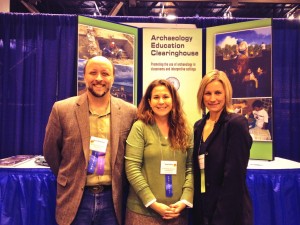
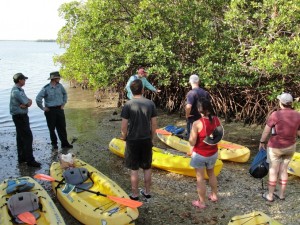
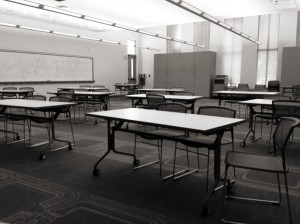

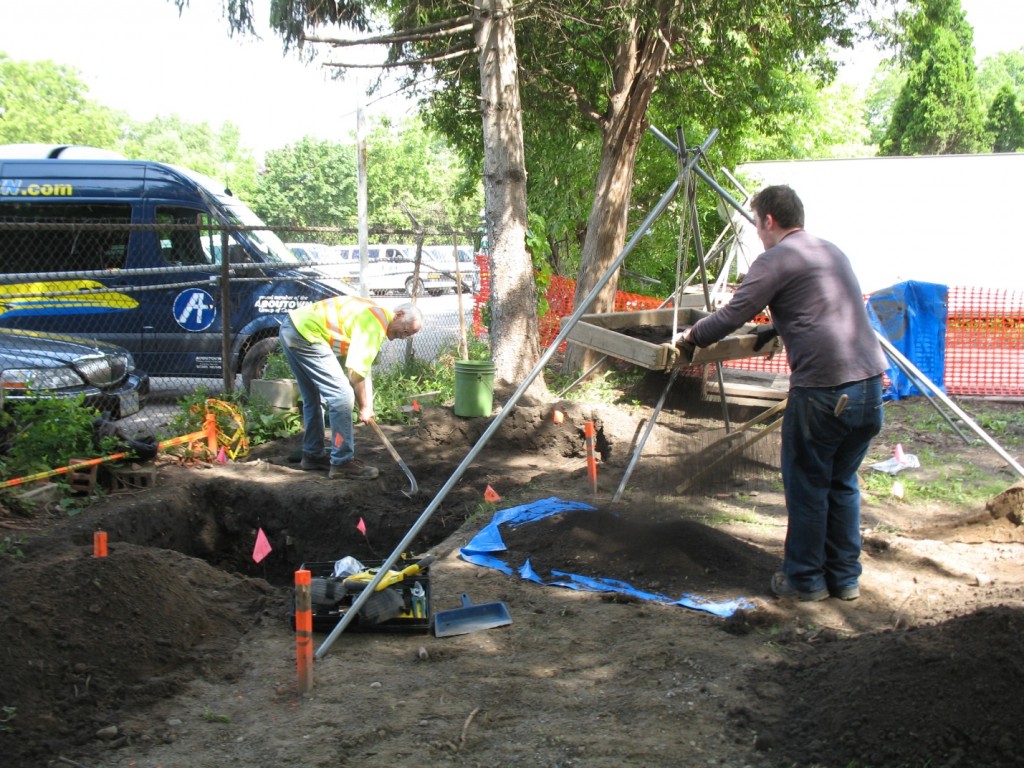
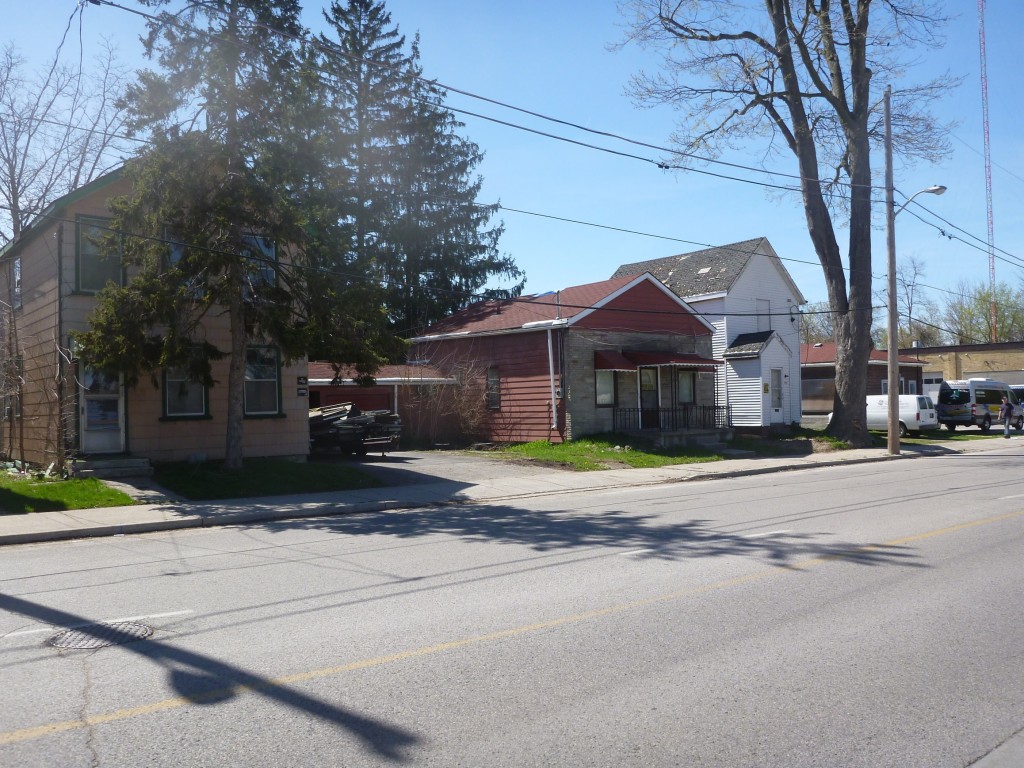
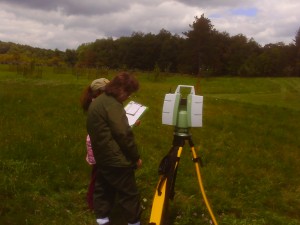
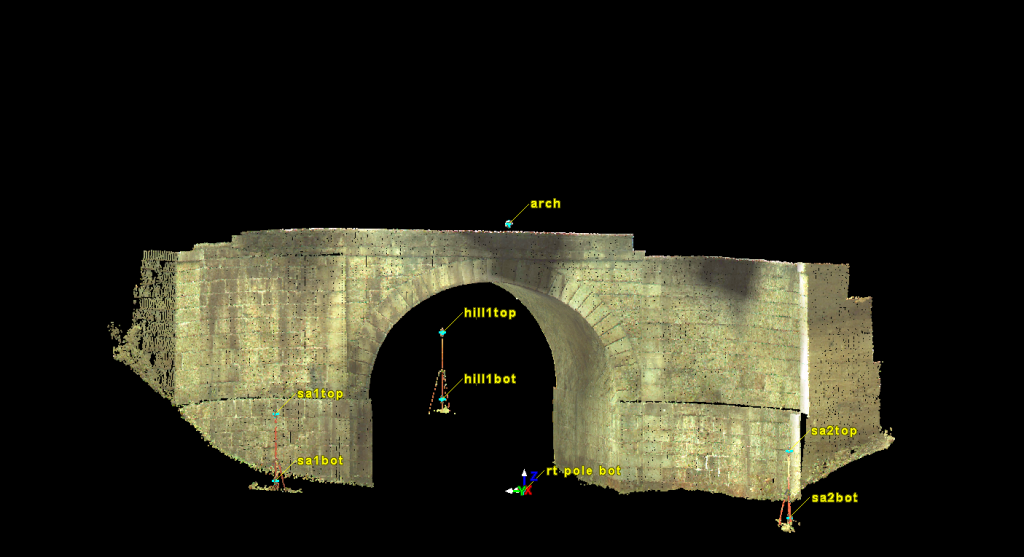
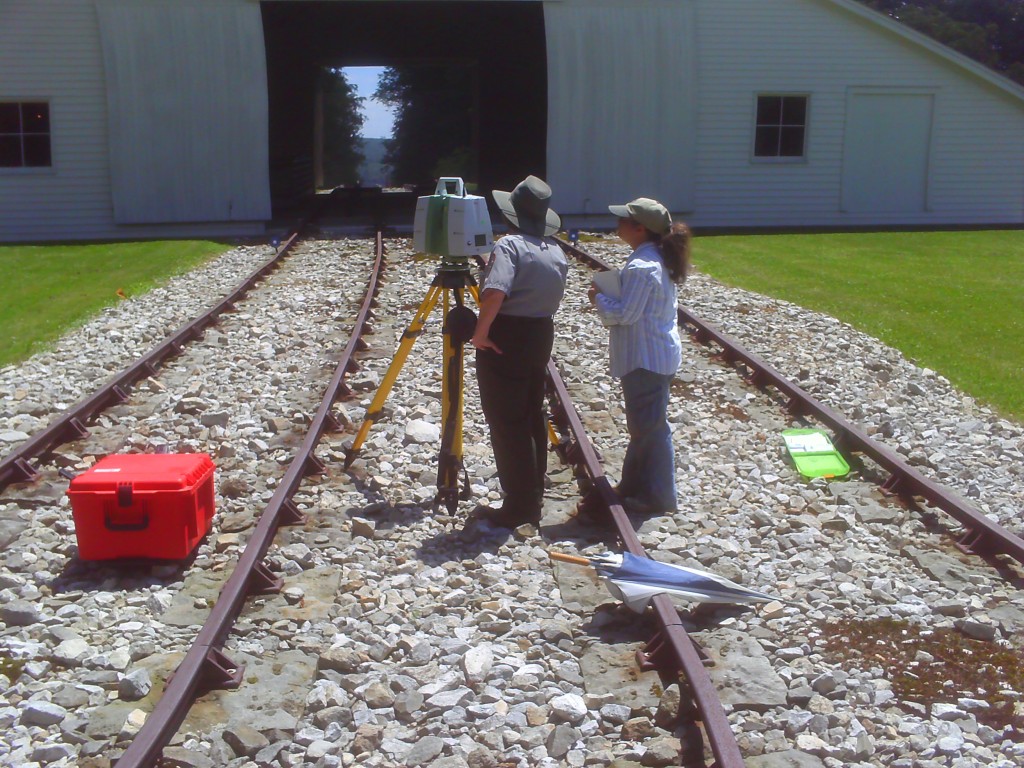
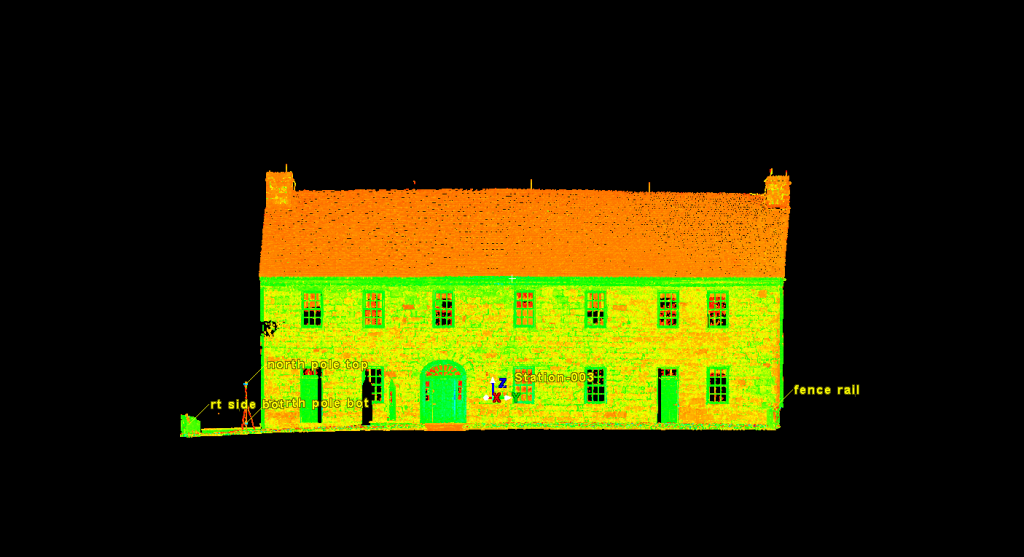
Pingback: WAC May 2012 eNewsletter – Volume 40 – World Archaeology Congress